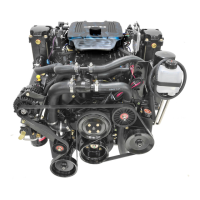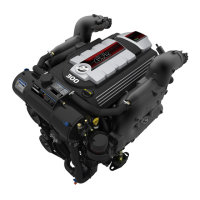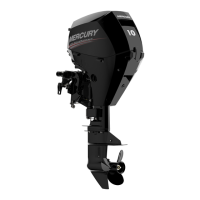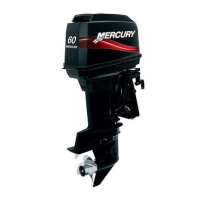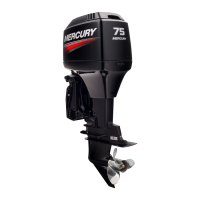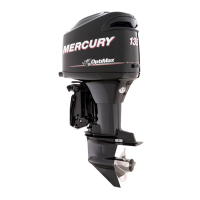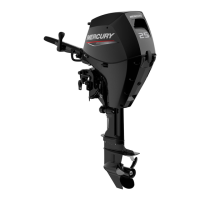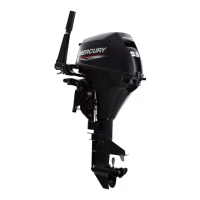GENERAL INFORMATION
Page 1C-6 90-827242R02 FEBRUARY 2003
Propeller Selection
For in-depth information on marine propellers and boat performance see your Authorized
Dealer for the illustrated What You Should Know About Quicksilver Propellers... and
Boat Performance Information (Part No. 90-86144 92).
For best all around performance from your outboard/boat combination, select a propeller
that allows the engine to operate in the upper half of the recommended full throttle RPM
range with the boat normally loaded (refer to Section 1A - Specifications). This RPM range
allows for better acceleration while maintaining maximum boat speed.
If changing conditions cause the RPM to drop below the recommended range (such as
warmer, more humid weather, operation at higher elevations, increased boat load or a dirty
boat bottom/gear case) a propeller change or cleaning may be required to maintain
performance and ensure the outboard’s durability.
Check full-throttle RPM using an accurate tachometer with the engine trimmed out to a
balanced-steering condition (steering effort equal in both directions) without causing the
propeller to break loose.
Refer to Mercury Precision Parts/Quicksilver Accessory Guide for a complete list of
available propellers.
1. Select a propeller that will allow the engine to operate at or near the top of the
recommended full throttle RPM range (refer to Section 1A - Specifications preceding)
with a normal load. Maximum engine speed (RPM) for propeller selection exists when
boat speed is maximum and trim is minimum for that speed. (High RPM, caused by an
excessive trim angle, should not be used in determining correct propeller.) Normally,
there is a 150-350 RPM change between propeller pitches.
2. If full throttle operation is below the recommended range, the propeller must be changed
to one with a lower pitch to prevent loss of performance and possible engine damage.
3. After initial propeller installation, the following common conditions may require that the
propeller be changed to a lower pitch:
a. Warmer weather and great humidity will cause an RPM loss.
b. Operating in a higher elevation causes an RPM loss.
c. Operating with a damaged propeller or a dirty boat bottom or gear housing will cause
an RPM loss.
d. Operation with an increased load (additional passengers, equipment, pulling skiers,
etc.).
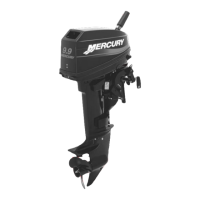
